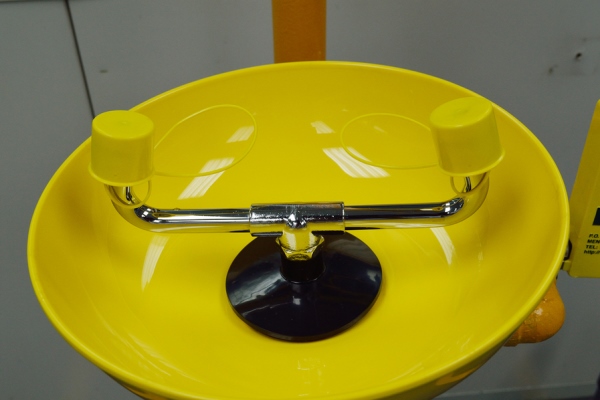Emergency Eyewash Use

THE FIRST 10 SECONDS ARE CRITICAL:
Toxic Substances, when coming in contact with the eye, immediately begin to damage sensitive eye tissue. The longer they remain in contact, the greater the damage to the eye. Besides tissue damage, acids and alkali can change the pH in the eye itself. When the pH of the eye begins to get out of the narrow tolerable range, severe eye damage, including blindness, may result. Therefore, it is imperative to begin flushing as quickly as possible after the eye comes in contact with a harmful substance.
When irritating or corrosive foreign substances get into the eye, the eyelids involuntarily clamp shut. Therefore, the person requiring the use of an eyewash device frequently needs assistance to find his/her way to the device.
This is best accomplished by two persons, each taking an arm of the injured person, and quickly leading him/her to the nearest eyewash device. The helpers then activate the eyewash device and position the water stream so that the injured person can flush the eye from the inside corner to the outside corner.
It is important to remember this so that the harmful substance is not flushed into the other eye. As mentioned before, since eyelids involuntary clamp shut when irritated, the victim can use his hands to hold open the eyelids to allow emergency eye flushing. ANSI guidelines suggest a full 15 minutes of flushing before seeking further medical help.
PREVENTION IS THE KEY TO EYE SAFETY -
It must be remembered that the first line of defense against toxic chemicals and eye irritants is proper eye and face protection coupled with proper handling techniques. Ensure you are wearing goggles when handling liquid chemicals that can splash up on you and a face shield when changing batteries or propane for forklifts.
